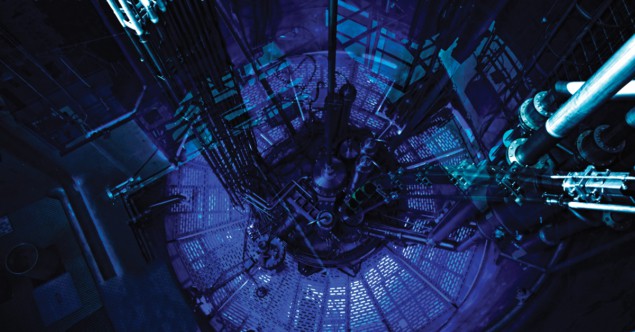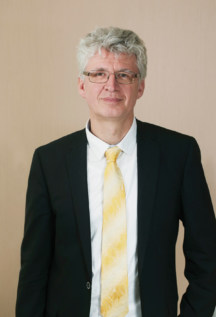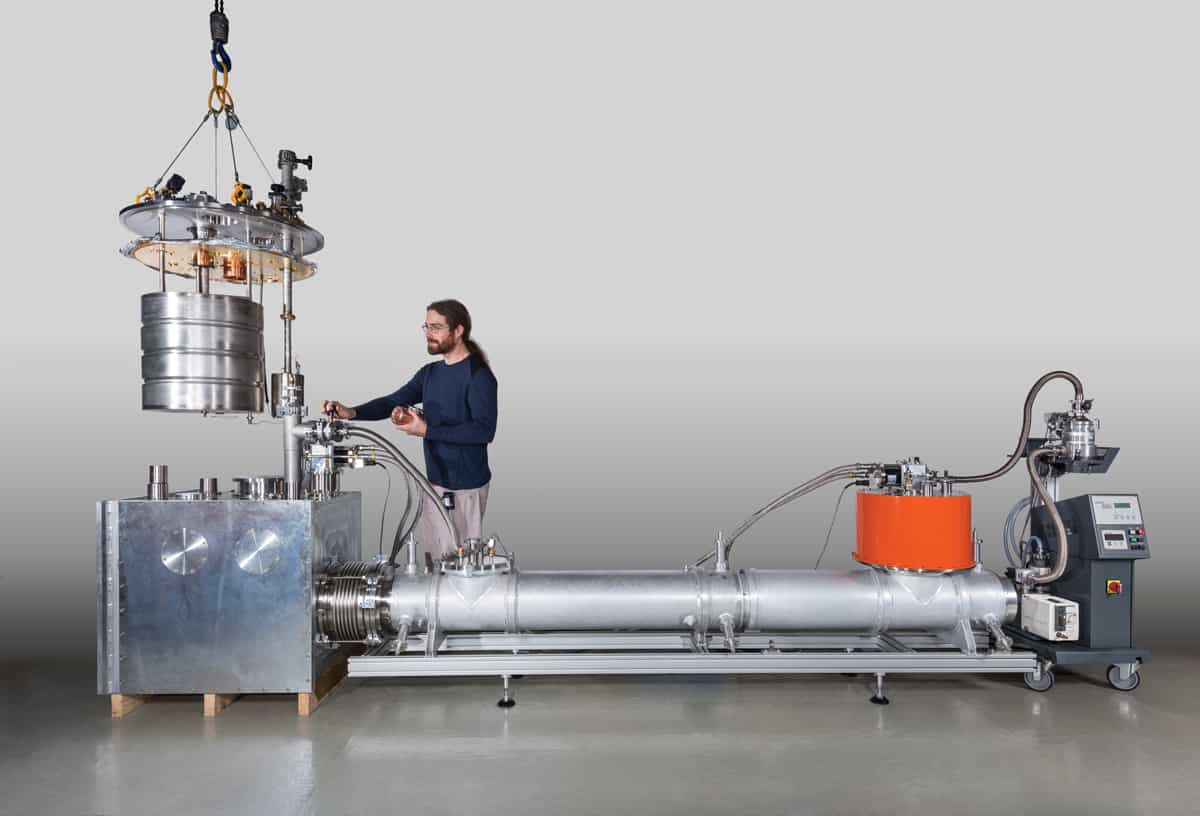Helmut Schober is director of the Institut Laue–Langevin (ILL) neutron research facility in Grenoble, France. As a physicist, his research has focused on fullerenes; the dynamics of liquids and glasses; and neutron instrumentation. He spoke to Physics World about how ILL strives to provide the best possible research environment for its user community

ILL has been upgraded continuously since 2000. What enhancements have been made and how are they currently being exploited by researchers?
Our Millennium upgrade programme ran from 2000 to 2016 and had a budget €100m. To put this into context, we were spending close to 10% of our overall budget every year on upgrades. Millennium was a continuous process of upgrading the services we provide to our users in terms of instrumentation and software. An example of one instrument that was upgraded is WASP, which is a spin echo spectrometer. We gained orders of magnitude in performance, which allowed our users to do completely new kinds of experiments.
We are currently in the Endurance upgrade programme, which began in 2016. It will see €60m invested over eight years ending in 2023 – again, that is about 10% of our total budget spent on upgrades each year.
The continuous upgrading of instrumentation is essential because technology changes rapidly – you wouldn’t buy a car today that had the performance of a 2000 model. Also, the scientific problems that our users tackle are becoming increasingly more complex. As a result, users expect equipment to deliver higher throughput; achieve shorter measuring times; study faster kinetic processes; smaller samples; and much more. We are in an international competition with other neutron facilities – as well as other probes of matter such as X-ray sources and electron microscopes – so upgrading keeps us highly competitive.
We have nearly 40 instruments at ILL – 28 of these are public instruments and the rest are what we call collaborating research group instruments. All together they support about 800 experiments and 1500 scientists per year. The lifetime of an instrument is about 10 years – then it needs a major upgrade or a complete rebuild. Sometimes an instrument is phased out because the science moves on and we replace it with a new instrument for a different community. This is what we did during the Millennium upgrade and we will continue to do in Endurance.
How do you plan for upgrades?
We run ILL a bit like a business. When planning the Endurance upgrade, we had to anticipate the needs of our future scientific clients. For example, neutron imaging had not been done at ILL but we realized that it is becoming increasingly relevant. We were able to gain competence in imaging from other facilities such as BER II in Berlin, which has just shut down, or the local university here in Grenoble. We plan to install some BER II instrument components here and aim to have a top-notch neutron-imaging facility here at the ILL – hopefully the best in the world.
Another thing that we identified in the consultation for Endurance is the need to support more research in structural biology. We have an instrument called LADI that did some nice work on the HIV virus, for example. We are now in the process of installing a second upgraded version of LADI, called DALI, that should be ready for the users as soon as our neutron source has started up after the lockdown. We will use that instrument immediately to do COVID-19-related research.
Our neutron source is a reactor, which must be maintained and upgraded to ensure that it is compliant with the highest safety standards. While this is less visible to our user community, we have spent ?30m over 2000–2016 keeping the reactor in the best possible shape.
Grenoble is also home to the European Synchrotron Radiation Facility (ESRF). What are the benefits to science of having these facilities right next to each other?
It’s definitely a benefit to have such facilities on the same site and many of our users also use X-rays at ESRF. This co-location has been copied in several places around the world including the UK and Switzerland.
Sometimes users make separate research proposals to each facility. Some measurements, however, must be made in a very co-ordinated way. In small-angle scattering, for example, it could be advantageous to do the neutron measurements after the X-ray measurements. In such cases scientists can make a joint proposal for beam time at both facilities. Grenoble is home to the Partnership for Soft Condensed Matter and the Partnership for Structural Biology, which encourage research that uses both ILL and ESRF.
When it comes to structural biology, Grenoble hosts a site of the European Molecular Biology Laboratory (EMBL) and the French Institute for Structural Biology (IBS). These institutes have complementary capabilities in microscopy and nuclear magnetic resonance (NMR).
It is also very important that we have strong links to academia and industry, both in Grenoble and throughout Europe. We currently have 40 PhD students at ILL and about 20 of those are linked to industry.

The European Spallation Source of neutrons will open in Sweden in 2023. What roles will the ILL and the ESS play in the European and international neutron communities?
Europe today has the highest performing neutron community in the world because of the high quality of its national and international facilities. It is very important that the ESS succeeds in becoming a flagship facility for Europe. The Spallation Neutron Source (SNS) in the US is up to full performance and is currently engaged in boosting the power of its accelerator while equally talking about a second target station. The Americans are also thinking about either upgrading or replacing their High Flux Isotope Reactor (HFIR). Elsewhere, the Chinese have just commissioned their spallation source and Japan has a powerful spallation source. In this competition, Europe must not lose out.
The ESS will have its first neutrons around 2023. Routine operation with a large part of the instruments in place should occur by 2025. It is crucial, therefore, that ILL maintains a high-quality service to Europe’s neutron community until at least 2030. User communities can be volatile and if there is a shortage of neutron capacity, scientists will turn to other probes to get the information they need.
Unfortunately, several reactor-based national and regional neutron sources have closed recently worldwide. Should these facilities be replaced, or does the future lie in upgrading major international sources like ILL?
Regional neutron sources are definitely needed but there is a political dimension to the closure issue – it depends on whether or not a country is still willing to build a reactor. Europe has a great deal of expertise in building and operating research reactors and this must be preserved because there are some neutron experiments that simply can’t be done using spallation sources. This is the approach that the US, Japan and China are taking. Furthermore, research reactors fulfil a very important role in society because they make medical isotopes.
In Europe, no single country can afford to have it all so it is important that we share the load. We already do this because both the ESS and ILL rely on financial input from many countries. However, there is a danger that when a country runs into financial difficulties and cuts back on spending on neutron research their research communities will suffer.
A case in point is Italy, which has a strong neutron community, but for various financial reasons is not currently able to contribute to ILL in a way that would allow Italian scientists to develop their full potential. Fortunately for us, this missing income has been compensated by contributions from other countries and the financial damage was limited. It is really tough, though, for Italian scientists because we have to turn down their excellent research proposals. I regret this as a scientist, but we cannot separate scientific strategy from the financial and political environments.

COVID-19 could result in a short-term crisis in scientific funding that could impact both direct funding of ILL and the funding of your user community. What worries you the most?
Both worry me. In the recession of 2007–2009, university funding was cut in some European countries. We noticed, for example, that demand from Spain’s large and high performing neutron community was going down. Access to ILL was guaranteed because Spain is a partner, but the community did not have enough PhD grants and other research funds – so scientific activity was reduced. We also had a budget cut after 2009 at ILL and this delayed the Millennium programme, which finished a bit later than originally planned.
In the face of a possible recession, we must ensure that ILL is properly funded so we can provide neutrons to our users – and we must also ensure that the ESS is not delayed by cutbacks. We operate in a research ecosystem and if financial difficulties occur in one area, it can affect the whole system. We need to limit the negative effects that this crisis could have on science budgets across Europe. This includes doing a holistic analysis of national facilities used by our community because delays in upgrades to national facilities could have significant overall effects on how ILL is used. It is really a complex matter.
On a positive note, COVID-19 has made governments realize how important research is. I hope that the promises that have been given in terms of maintaining research budgets will materialize. Also, I hope that this money is not directed only to research related to the virus – because the next crisis may be completely different.
Some physicists might be surprised to hear that ILL also has fundamental physics programme. What does that entail?
Our reactor produces large quantities of neutrinos and we have an experiment called STEREO that measures neutrino oscillations with the hope of discovering a fourth type of neutrino called a sterile neutrino. We are currently considering a proposal for an experiment called RICHOCHET that would measure how neutrinos scatter from nuclei in a solid target.
We also do fundamental physics by creating beams of cold neutrons – and by trapping and storing ultracold neutrons. This allows us to make very precise measurements of the neutron lifetime, which is important because the decay of the neutron to a proton offers the cleanest way to study the weak interaction. We can also measure the electric dipole moment of the neutron. This should be zero according to the Standard Model of particle physics, so a non-zero measurement would be very significant. And last but not least, the precise determination of the neutron’s gravitational states is a valuable test bed for models trying to explain dark matter or dark energy.



